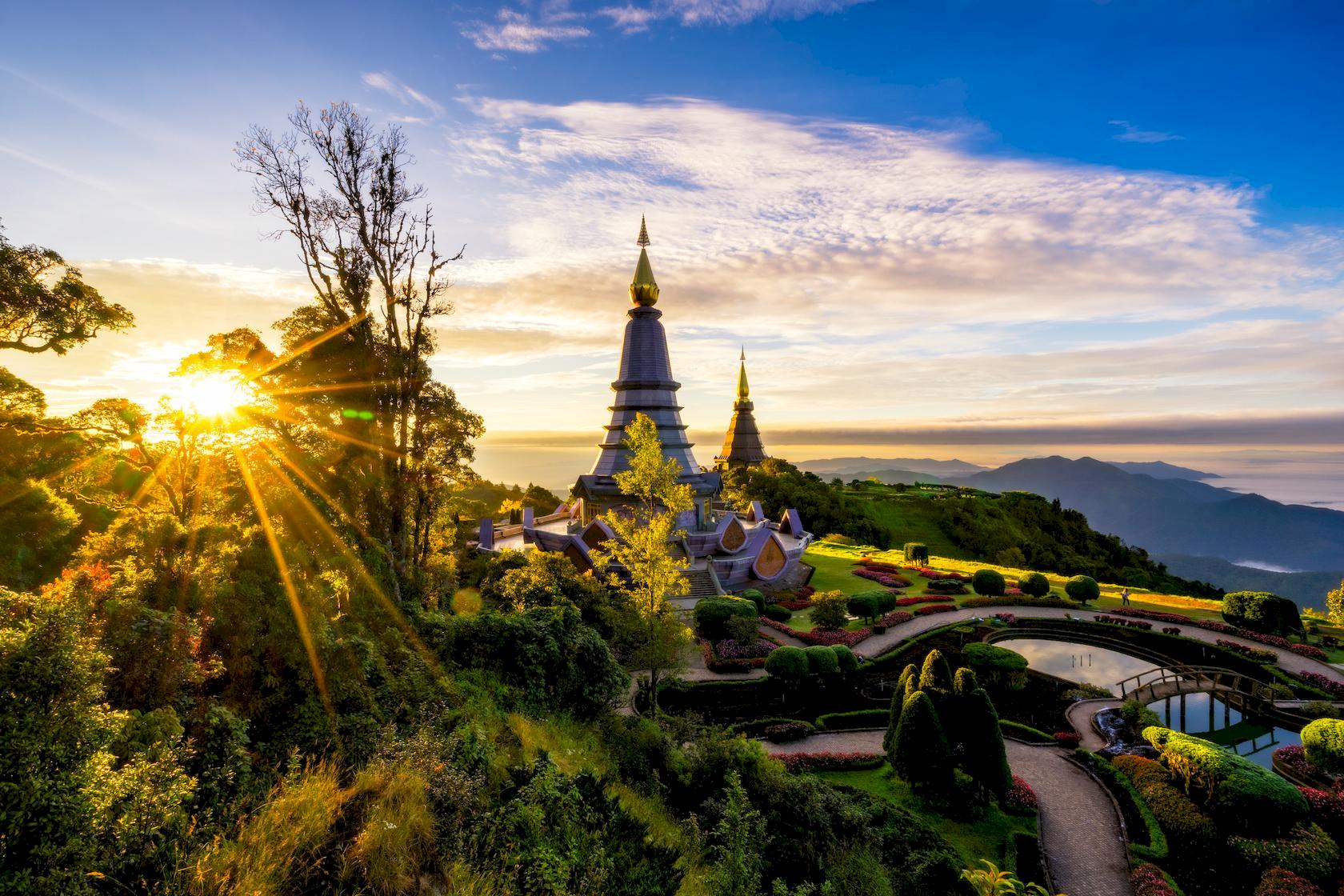
Nestled in the mountains of northern Thailand, Chiang Mai charms visitors with its peaceful atmosphere, centuries-old temples, artisan markets, and lush nature. It’s the perfect destination to combine culture, adventure, and relaxation.
Elephants,Mix activities,Trekking
3days
Adventure,Mix activities,Trekking
3days
Adventure,Culture,Elephants,Mix activities,Trekking
3days
Chiang Mai, often called the "Rose of the North," is one of Thailand’s most culturally rich and historically significant cities. Founded more than 700 years ago, it has served as the capital of the Lanna Kingdom, a religious center of Theravāda Buddhism, and today, as a thriving hub for tourism and traditional crafts.
Chiang Mai was founded in 1296 by King Mengrai the Great as the new capital of the Lanna Kingdom, replacing the former capital Chiang Rai. The name "Chiang Mai" means "New City" in Thai. The city was strategically chosen for its location in a fertile river valley and proximity to trade routes through China and Burma (modern-day Myanmar).
King Mengrai built massive city walls and a moat to protect Chiang Mai from invasions, particularly from the Burmese. These fortifications can still be seen today, especially in the Old City. The city quickly flourished and became a political and cultural center in northern Thailand.
As the capital of Lanna, Chiang Mai became a spiritual center. Dozens of temples were built, many of which still stand today. Among the most iconic is Wat Phra That Doi Suthep, located on a mountain overlooking the city. According to legend, the temple was built to enshrine a sacred relic of the Buddha brought by a white elephant, which chose the site by climbing the mountain and trumpeting before dying at the top.
Other notable temples include Wat Chedi Luang, once home to the Emerald Buddha, and Wat Phra Singh, known for its classic Lanna-style architecture and revered Buddha image.
Despite its prosperity, Chiang Mai experienced periods of decline due to internal conflict and external threats. In 1558, the city fell to Burmese forces and remained under Burmese rule for more than 200 years. During this time, Chiang Mai lost its political dominance but retained its cultural identity.
By the late 18th century, King Taksin of Thonburi and later King Kawila, a local noble, launched efforts to expel the Burmese. In 1774, Chiang Mai was liberated and gradually repopulated and rebuilt. The city became part of the expanding Siamese Kingdom and maintained some degree of autonomy as a semi-independent state.
During the reign of King Rama V (Chulalongkorn) in the late 19th century, Chiang Mai was fully integrated into the Kingdom of Siam. Administrative reforms and modern infrastructure were introduced, reducing the power of local rulers. Railways and roads connected the city to Bangkok and the south, allowing for increased trade and cultural exchange.
Although the Lanna Kingdom ceased to exist as a political entity, its cultural legacy remained strong. Traditions, language (Kham Mueang), festivals, and arts were preserved and continue to influence Chiang Mai’s identity today.
Throughout the 20th century, Chiang Mai modernized rapidly while maintaining its traditional charm. The establishment of Chiang Mai University in 1964 turned the city into an educational hub. Art, music, and local crafts flourished, and a new generation of artists began merging traditional and contemporary styles.
With the rise of international tourism in the late 20th century, Chiang Mai became a top destination for travelers seeking a mix of culture, nature, and wellness. Activities like trekking, cooking classes, yoga retreats, and visits to elephant sanctuaries became popular, drawing millions of visitors each year.
Today, Chiang Mai balances modern life with cultural heritage. The city is home to digital nomads, retirees, artisans, and monks alike. Festivals like Loy Krathong and Songkran attract thousands each year with their beauty and symbolism. The city has also gained recognition for its sustainability efforts, slow living, and emphasis on community-based tourism.
Despite challenges such as urban development and seasonal air pollution, Chiang Mai continues to reinvent itself while honoring its past. It remains a city where ancient temples, night markets, lush mountains, and a deeply spiritual way of life coexist in harmony.
Chiang Mai’s history is a story of resilience, cultural pride, and timeless beauty. Whether you're walking through the Old City’s historic walls or watching monks receive morning alms, every moment in Chiang Mai feels like a step back in time and a glimpse into a vibrant future.